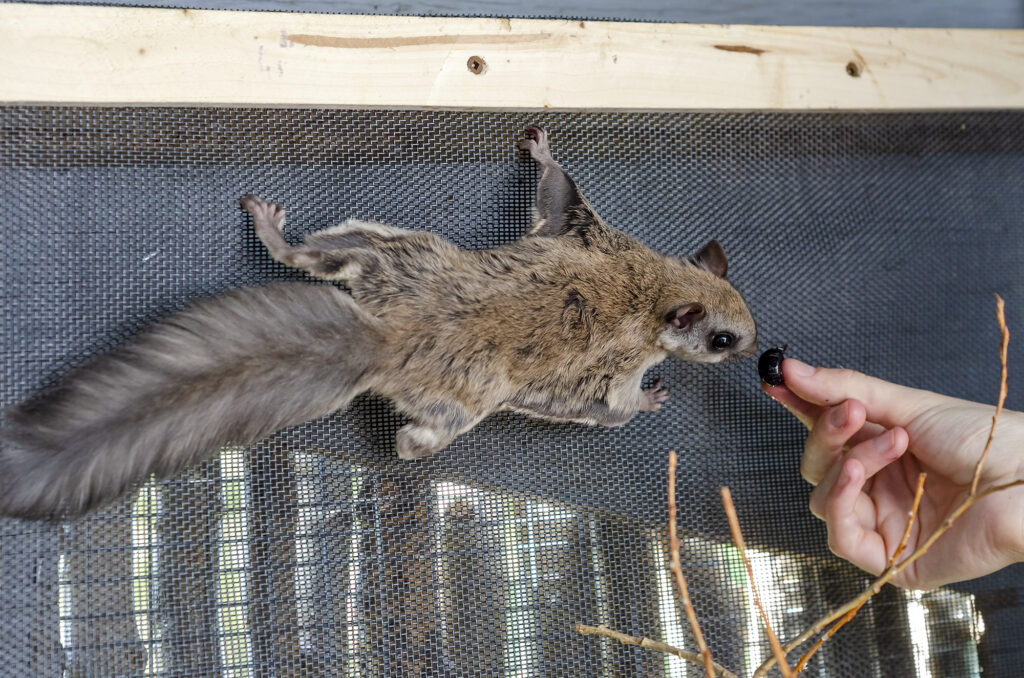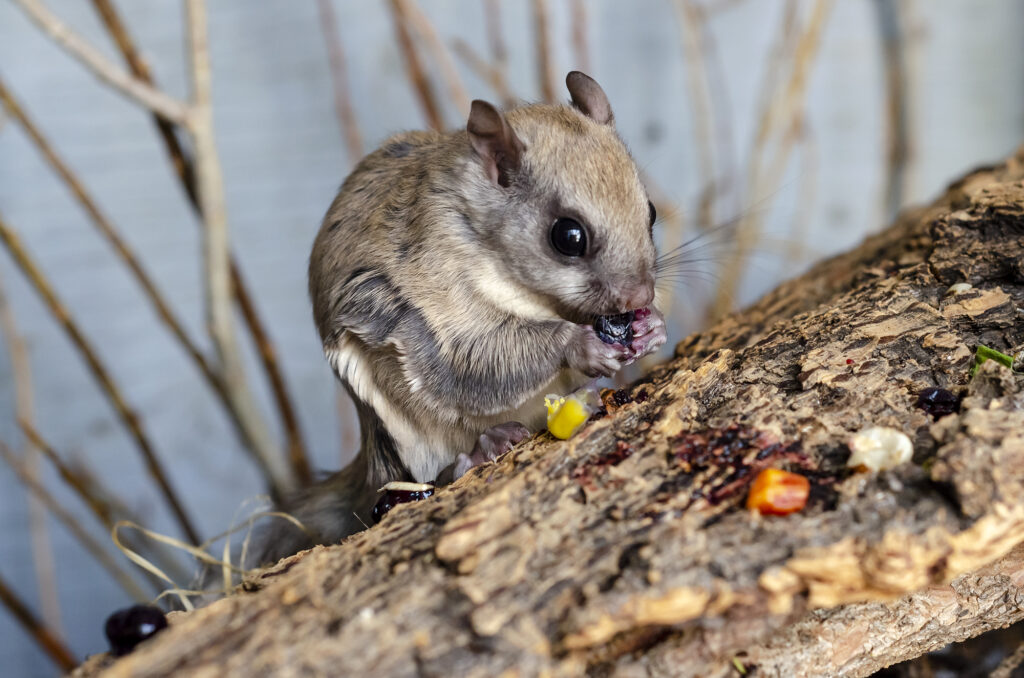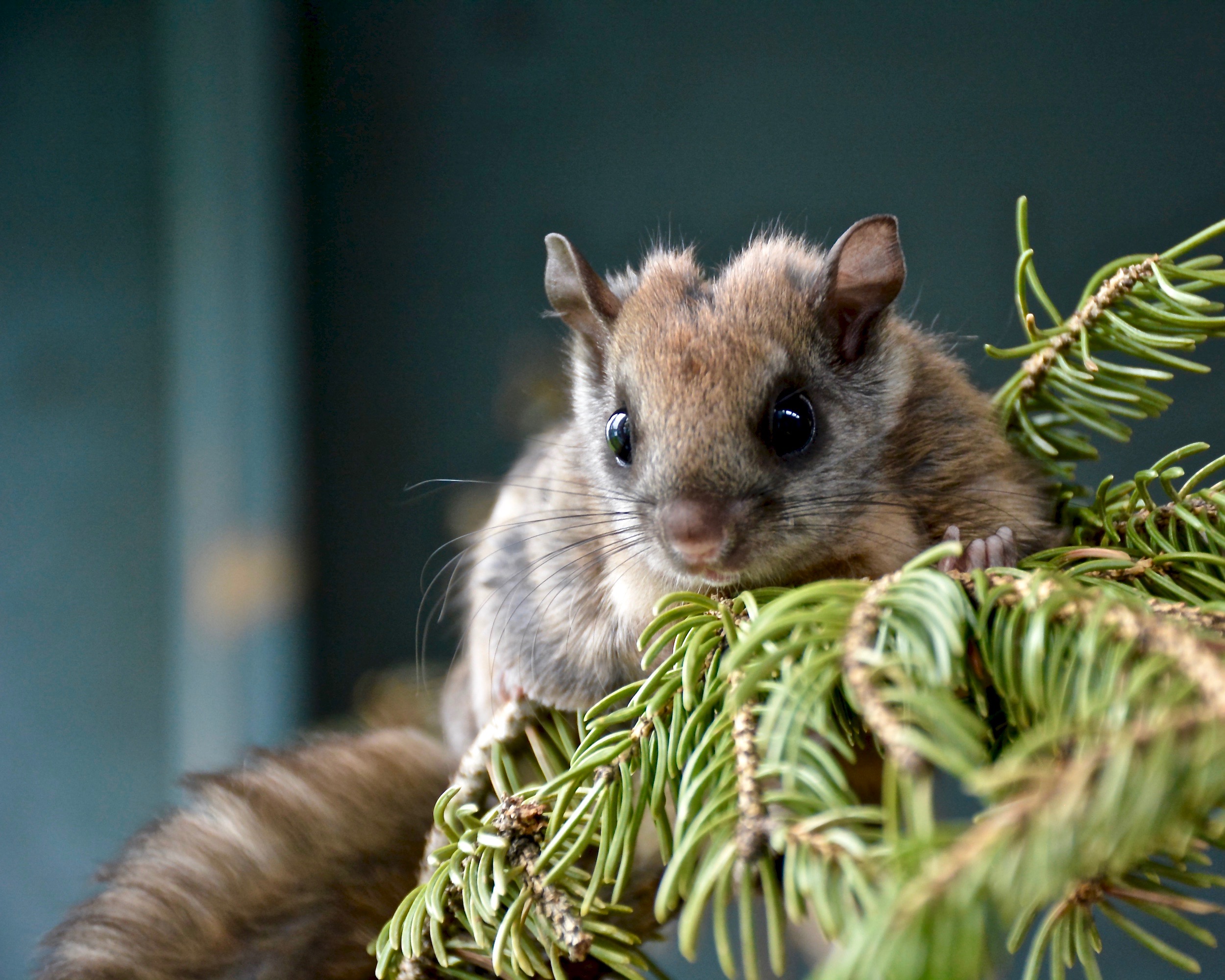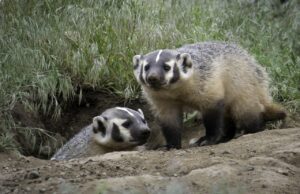By Katie Grant
Alberta is home to a truly unique mammal among its many forest-dwellers. The northern flying squirrel doesn’t actually fly, but their ability to glide makes them a treetop acrobat. One of the best gliding mammals in the world, they can glide up to 150 feet in a single leap.
So, how exactly do they do this? The northern flying squirrel has a unique gliding membrane called a patagium that extends from their wrists to their ankles. This membrane creates a living parachute, enabling them to soar through forest canopies with remarkable precision.1 The tail, acting the same as a rudder on the back of a plane, helps steer and stabilize their glide. Body posture, limb extension and tail position are all used to control flight path and landing. Flying squirrels are very skilled at maneuvering mid-glide, and have been observed making turns of nearly 180 degrees while in the air.2

These nocturnal mammals grow to a length of 10-15 inches and have large black eyes for better night vision. They have dense, silky brownish-grey fur on their backs with cream-coloured fur on their bellies. Their feet are specially adapted for climbing, with sharp, curved claws and hairy paw pads that provide extra grip on tree bark.2
Habitat & Breeding
The northern flying squirrel prefers mature coniferous and mixed forests with dense canopy cover to enable gliding between trees. Studies done in Alberta found that they are more abundant in older forests with structures like large trees, cavities for dens, and deadwood (snags, woody debris) which provide both nesting and denning sites. They are social animals and can be found denning in groups to conserve body heat and reduce energy expenditure.3 They switch dens often, most likely to evade predators.4

Breeding season occurs between late winter and early spring. The gestation period is approximately 40 days and females give birth to anywhere from one to six offspring. Young are born blind and helpless, and rely completely on their mother for survival during their first few weeks. Weaning takes place around six to eight weeks of age, but young squirrels usually stay with their mother for several more weeks to practice vital survival skills such as gliding, finding food, and avoiding predators. Mothers will teach their young to recognize suitable fungi for food and how to travel safely through the forest canopy. The extended care period shown by mother northern flying squirrels is thought to help contribute to higher survival rates among their young.3
Threats
Northern flying squirrels face pressures from both humans and natural predators. Logging, forest fragmentation, and urban development destroy the canopy and habitat corridors they need to survive.3 Natural predators such as owls, hawks, martens, and weasels also take a toll, and free-roaming cats add an extra threat. Though their large eyes, nocturnal habits, and gliding abilities help them evade danger, most northern flying squirrels will not survive more than four years due to these combined challenges.6
Nearly invisible to most of us, northern flying squirrels spend their nights gliding though the treetops. Though you may never spot one, these mammals are important members of Alberta’s forests. If you do come across one on the ground, it may mean the animal is sick, injured, or orphaned. In that case, please contact AIWC right away. With proper care, these secretive squirrels can be given a second chance to return to their forest homes.
References
- KnowYourMammals.com. (n.d.). Northern flying squirrel (Glaucomys sabrinus). Retreieved October, 2025, from: https://www.knowyourmammals.com/mammal-identification/northern-flying-squirrel-glaucomys-sabrinus/
- Smithsonian Science Education Center. (2025). Garden Gliders [Blog post]. Retreieved October, 2025, from: https://ssec.si.edu/stemvisions-blog/garden-gliders#:~:text=Flying%20squirrels%20use%20their%20tails,180%2Ddegrees%20during%20their%20glide
- HowToHelpAnimals.com. (n.d.). Northern flying squirrel: Complete species guide. Retreieved October, 2025, from: https://howtohelpanimals.com/mammals/squirrels/northern-flying-squirrel-complete-species-guide/
- Doyon, F., Higgelke, P. E., & MacLeod, H. L. (2000, May). Northern flying squirrel (Glaucomys sabrinus) — Conservation and the effect of forest activities (KBM Forestry Consultants Inc.). Millar Western Forest Products’ Biodiversity Assessment Project. https://isfort.uqo.ca/wp-content/uploads/2020/11/Doyon-et-al.-2000.-Northern-flying-squirrel-Glaucomys-sabrinus.pdf
- Wikipedia contributors. (n.d.). Northern flying squirrel. In Wikipedia, The Free Encyclopedia. Retrieved October, 2025, from https://en.wikipedia.org/wiki/Northern_flying_squirrel
- Canadian Wildlife Federation. (n.d.). Northern flying squirrel. Retrieved October, 2025, from https://cwf-fcf.org/en/resources/encyclopedias/fauna/mammals/northern-flying-squirrel.html?gad_source=1&gad_campaignid=20653613966&gclid=CjwKCAjw6P3GBhBVEiwAJPjmLmEWtSnbPj490xX_lUwGFw0b6zB2p95r08dMklCOxkgNI617M1JCZhoCS4wQAvD_BwE&gbraid=0AAAAAC_oCeldYYh8yp7cj6oSWM435sRs7




